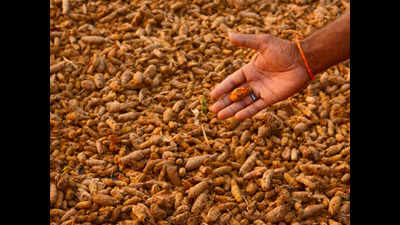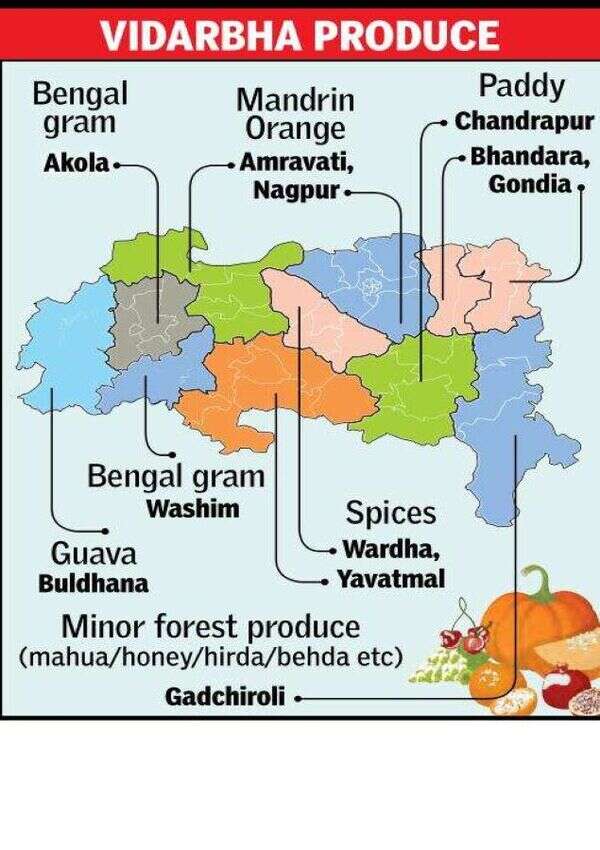- News
- City News
- nagpur News
- Maharashtra: ‘One-crop one-produce’ scheme prefers turmeric over tur in Yavatmal, Wardha
Trending
This story is from March 2, 2021
Maharashtra: ‘One-crop one-produce’ scheme prefers turmeric over tur in Yavatmal, Wardha
The central government’s Rs10,000 crore, one-crop one-product scheme to boost food industry may not have the right combination for districts like Yavatmal and Wardha.

‘One-crop one-produce’ scheme prefers turmeric over tur in Yavatmal, Wardha
NAGPUR: The central government’s Rs10,000 crore, one-crop one-product scheme to boost food industry may not have the right combination for districts like Yavatmal and Wardha.
Over 130 crops have been identified for each district in the country. The scheme calls for supporting cultivation and processing of the given crop through subsidy in each of the districts.If farmers form a group of 10, each member will get a subsidy of Rs40,000 as working capital and the subsidy is up to Rs10 lakh for processing units.

For Wardha and Yavatmal, the scheme identifies turmeric as the focus crop. However, turmeric is grown in only around 5,000 acre in both the districts. This is despite the famed Waigaon turmeric of Wardha getting a geographical indication (GI) tag.
The crops were chosen on the basis of recommendation by a committee, which included each district’s guardian minister, collector and officials of state agriculture department. The committee in Wardha and Yavatmal had pushed the case for tur. The central government, however, turned it down and chose turmeric instead, said sources.
Sources in the state government said the right crop has been chosen for other district of Vidarbha. Oranges have been identified for Nagpur and Amravati. Its paddy for Bhandara, Gondia and Chandrapur, guavas for Buldhana, Bengal gram (chana) for Akola and oilseeds, safflower and sunflower for Washim.
The agriculture department will have to push hard to increase turmeric production in the two districts, said sources.
Tur was rejected because the Centre’s plan was to identify perishable crops which can be processed. Tur is only made into dal, which is a much simpler process, said a source.
One of the criterion was presence of micro industries for processing a particular crop in the district. Even by those standards, there are only a handful of powdering units for turmeric, said sources.
The state’s agriculture department could get the crop changed for Washim. Instead of Bengal gram (chana), it was changed to oilseed, safflower, sunflower and linseed.
In Buldhana, guavas are grown in not more than 1,400 hectares. However, there was a steady increase of 500 hectares a year. The fruits here are sweeter, which can give Buldhana an edge in guava processing, a source said.
Kishore Tiwari, chairman of Vasantrao Naik Shetkari Swavalamban Mission (VNSSM), a government agency on farm crisis, said turmeric has potential as a medicinal crop and the state should support the plan.
Lalit Bahale, president of Shetkari Sangathana, said facilitating a particular crop in each district can lead to episodes like the ongoing farmers’ agitation. Such moves can distort demand and supply, he said.
Over 130 crops have been identified for each district in the country. The scheme calls for supporting cultivation and processing of the given crop through subsidy in each of the districts.If farmers form a group of 10, each member will get a subsidy of Rs40,000 as working capital and the subsidy is up to Rs10 lakh for processing units.

For Wardha and Yavatmal, the scheme identifies turmeric as the focus crop. However, turmeric is grown in only around 5,000 acre in both the districts. This is despite the famed Waigaon turmeric of Wardha getting a geographical indication (GI) tag.
According to estimates, turmeric is grown in around 4,000 acres in Yavatmal and not more than 800 acres in Wardha.
The crops were chosen on the basis of recommendation by a committee, which included each district’s guardian minister, collector and officials of state agriculture department. The committee in Wardha and Yavatmal had pushed the case for tur. The central government, however, turned it down and chose turmeric instead, said sources.
Sources in the state government said the right crop has been chosen for other district of Vidarbha. Oranges have been identified for Nagpur and Amravati. Its paddy for Bhandara, Gondia and Chandrapur, guavas for Buldhana, Bengal gram (chana) for Akola and oilseeds, safflower and sunflower for Washim.
The agriculture department will have to push hard to increase turmeric production in the two districts, said sources.
Tur was rejected because the Centre’s plan was to identify perishable crops which can be processed. Tur is only made into dal, which is a much simpler process, said a source.
One of the criterion was presence of micro industries for processing a particular crop in the district. Even by those standards, there are only a handful of powdering units for turmeric, said sources.
The state’s agriculture department could get the crop changed for Washim. Instead of Bengal gram (chana), it was changed to oilseed, safflower, sunflower and linseed.
In Buldhana, guavas are grown in not more than 1,400 hectares. However, there was a steady increase of 500 hectares a year. The fruits here are sweeter, which can give Buldhana an edge in guava processing, a source said.
Kishore Tiwari, chairman of Vasantrao Naik Shetkari Swavalamban Mission (VNSSM), a government agency on farm crisis, said turmeric has potential as a medicinal crop and the state should support the plan.
Lalit Bahale, president of Shetkari Sangathana, said facilitating a particular crop in each district can lead to episodes like the ongoing farmers’ agitation. Such moves can distort demand and supply, he said.
End of Article
FOLLOW US ON SOCIAL MEDIA










